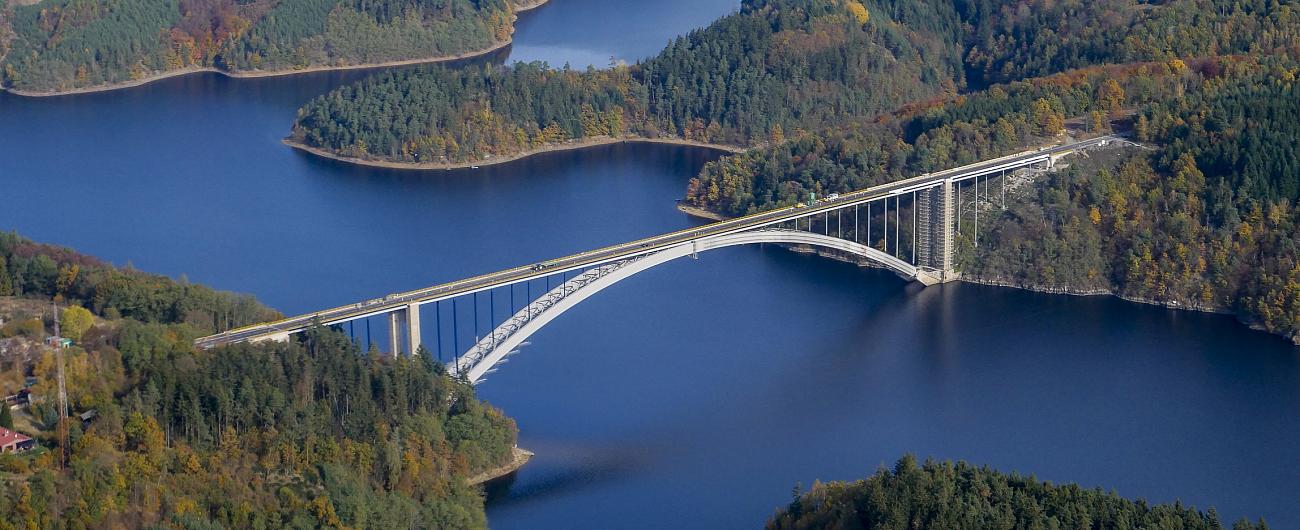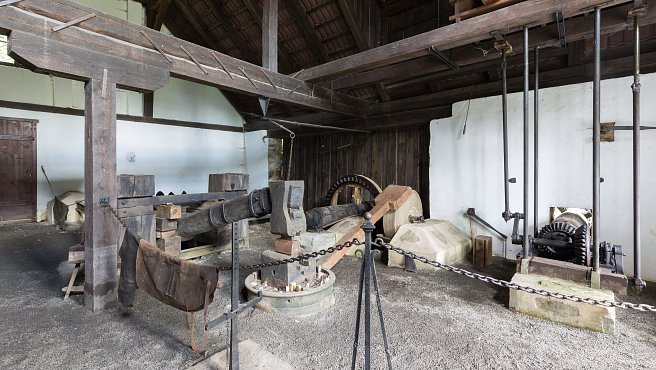
Bušek Hammer Mill
The Bušek Hammer Mill is a functioning technical monument, one of three of its kinds in the Czech Republic. It originated in 1780 through the reconstruction of the original mill. The hammer is driven by three waterwheels launching into operation a…
Go to detail
Historical Railway from Tábor to Bechyně
The railway from Tábor to Bechyně was the first electrified railway track on the territory of former Austria-Hungary. The plan of the railway connection from Tábor to Bechyně comes from the end of the 19th century. In the same period, František…
Go to detail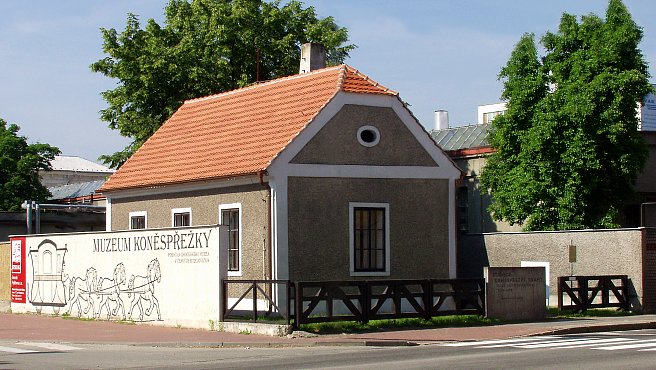
Horse-Drawn Railway from České Budějovice to Linz
The main reason for the construction of the horse-drawn railway from České Budějovice to Linz was to transport salt from the Austrian Salt Chamber to Bohemia. The construction was initiated under the management of engineer František Antonín Gerstner…
Go to detailHoslovice Water Mill
This unique preserved water mill for upper water is over 400 years old. The unique mill, with its repaired historical equipment, is a suitable place for traditional craft production. Many events illustrating life in a village, including maintained…
Go to detail
Lipno Dam
This is a water work built on the Vltava River in 1952-1959. With its area of 48.7 km2 this is the largest dam reservoir and the largest water area in the Czech Republic, thanks to which it is also frequently known as the Czech or South Bohemian Sea…
Go to detail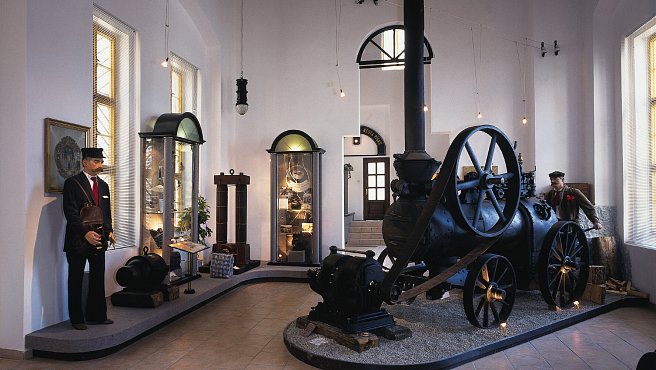
Municipal Power Plant in Písek
The municipal power plant in Písek is the oldest functioning water power plant in Bohemia. It was founded aft er a successful demonstration of lighting in the town by František Křižík on 23 June 1887. Písek thus became the fi rst town in Bohemia…
Go to detail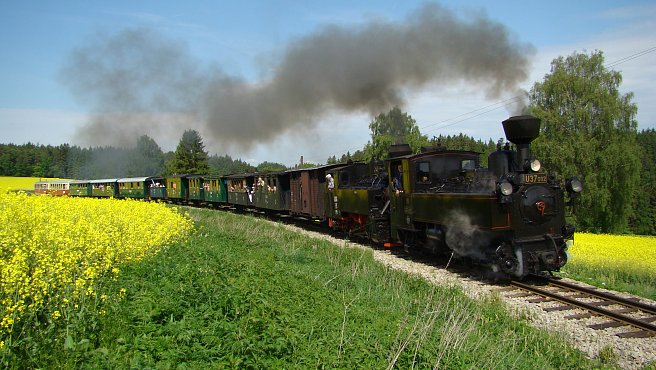
Narrow-gauge Railways in the Jindřichův Hradec Region
The starting point of this narrow-gauge railway is the city of Jindřichův Hradec, where 2 tracks start: to the north in the direction of Obrataň and to the south in the direction of Nová Bystřice. The operation of this track was initiated in 1897.…
Go to detailOrlík Reservoir
This water work shows several rarities. First, this lake has the greatest amount of water in Bohemia, has the highest concrete dam, and the second most powerful water plant in the Czech Republic. The dam itself is gravitational and the concrete from…
Go to detail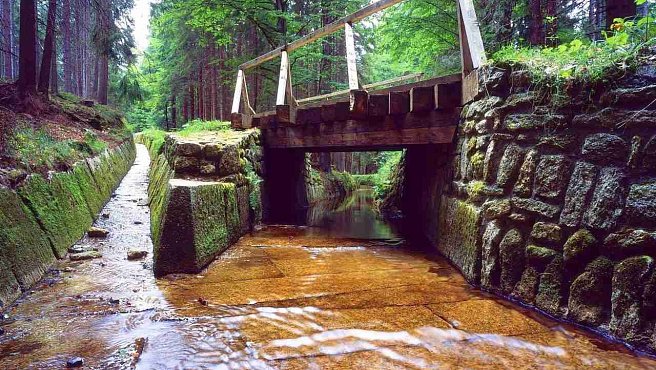
Schwarzenberg timber floating canal
The Schwarzenberg timber fl oating canal connects Světlá, which is one of the tributaries of the Studená Vltava River, and the Austrian river Große Mühl, a tributary of the Danube River, thus connecting the drainage basin of the Nothern Sea and the…
Go to detail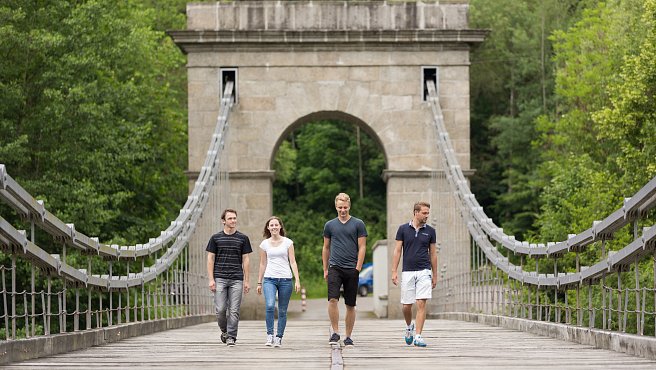
Stádlec Bridge
This bridge over the Lužnice River was built in 1975 below the town of Stádlec and is the last preserved Empirical chain bridge in the Czech Republic. Originally, in 1848 -1960, it spanned the Vltava River near Podolsko. In 1959 it was declared a…
Go to detailStone Bridge in Písek
The town of Písek prides itself with the oldest surviving stone bridge in Bohemia. It was built by the royal stone-mason works in Písek and Zvíkov before the end of the 13th century. It has seven arches, a length of 110 meters, and a width of 6.5…
Go to detailStud Farm in Písek
The stud farm in Písek is a complex of unique buildings made of brickwork. Since 2010, it has been a national cultural heritage monument and is visible from the main road on the route from Prague to České Budějovice when using the ring road around…
Go to detail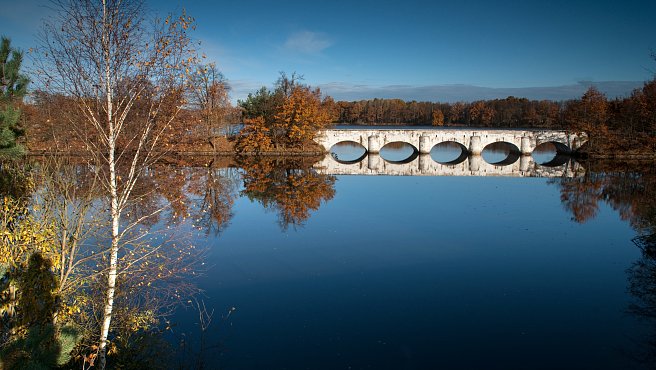
Třeboň pond system
In the originally swampy countryside of the Třeboň Region, the establishment of lakes associated with fi sh breeding became a profitable economic activity. At the turn of the 15th and 16th centuries, Petr IV of Rožmberk became the owner of the…
Go to detailŽdákov Bridge
The bridge construction was initiated simultaneously with the construction of the Orlík Reservoir in 1957. The construction cost 71 million Czechoslovak crowns and it was defi nitively completed in 1967. At that time, the bridge was considered the…
Go to detail